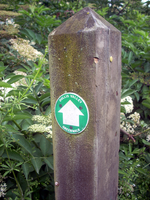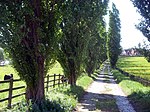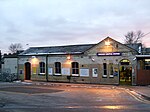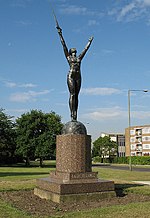Finchley Gap

The "Finchley Gap" (or "Finchley depression") is a location in north London which today lies, and which for much of the Pleistocene epoch has lain, between higher ground to the north-west (Mill Hill) and south-east (Hampstead Heath). The term "Finchley Gap" has been used in archeological literature. "Finchley depression" has been used in geomorphological literature. Until the 1960s, it was supposed that the River Thames once flowed through the gap, on a loop running from Harefield to Ware.However, no deposits which were unambiguously of Thames origin were ever found along that line. And subsequent detailed study of deposits in the Vale of St Albans led researchers to the conclusion that the River Thames never flowed through the Finchley Gap. Instead, it was established that the river stayed on a course north-eastward through the Vale of St Albans until it was diverted, by the Anglian ice advance approximately 450,000 years ago, to a more southerly route, roughly along the line of that followed by today's river.A lobe of the Anglian ice sheet advanced at least as far south as the Finchley Gap. As it melted, it deposited about 14 metres of glacial till there.
Excerpt from the Wikipedia article Finchley Gap (License: CC BY-SA 3.0, Authors, Images).Finchley Gap
Rathgar Close, London Church End (London Borough of Barnet)
Geographical coordinates (GPS) Address Nearby Places Show on map
Geographical coordinates (GPS)
| Latitude | Longitude |
|---|---|
| N 51.6 ° | E -0.2 ° |
Address
Rathgar Close
Rathgar Close
N3 1UA London, Church End (London Borough of Barnet)
England, United Kingdom
Open on Google Maps










